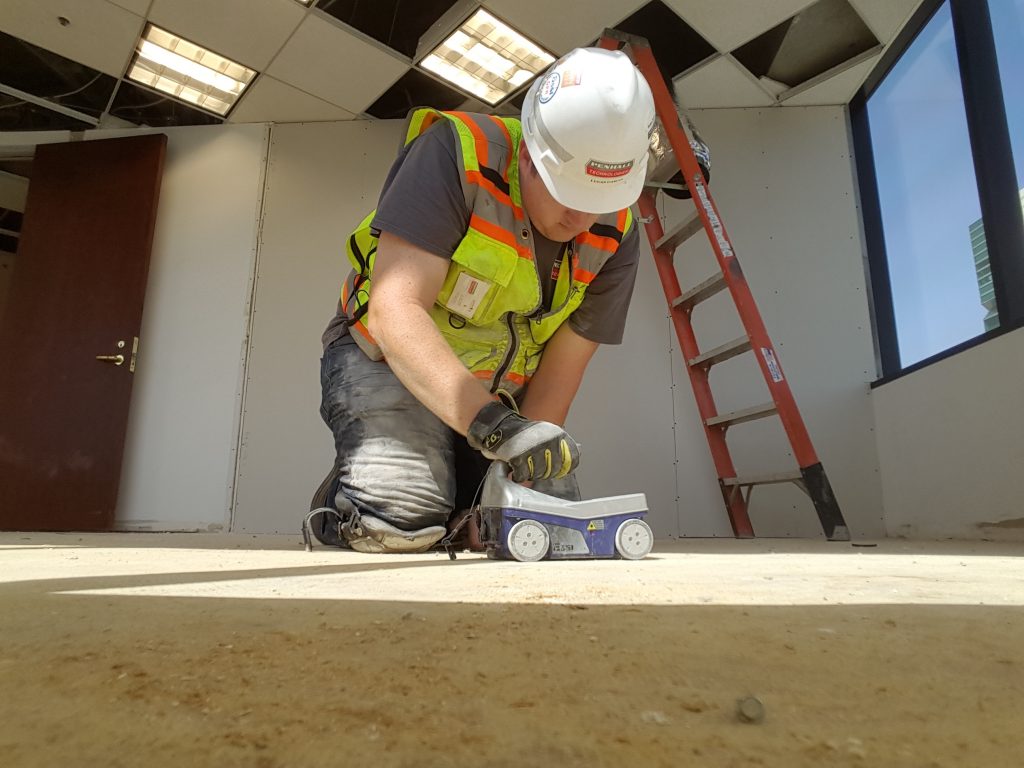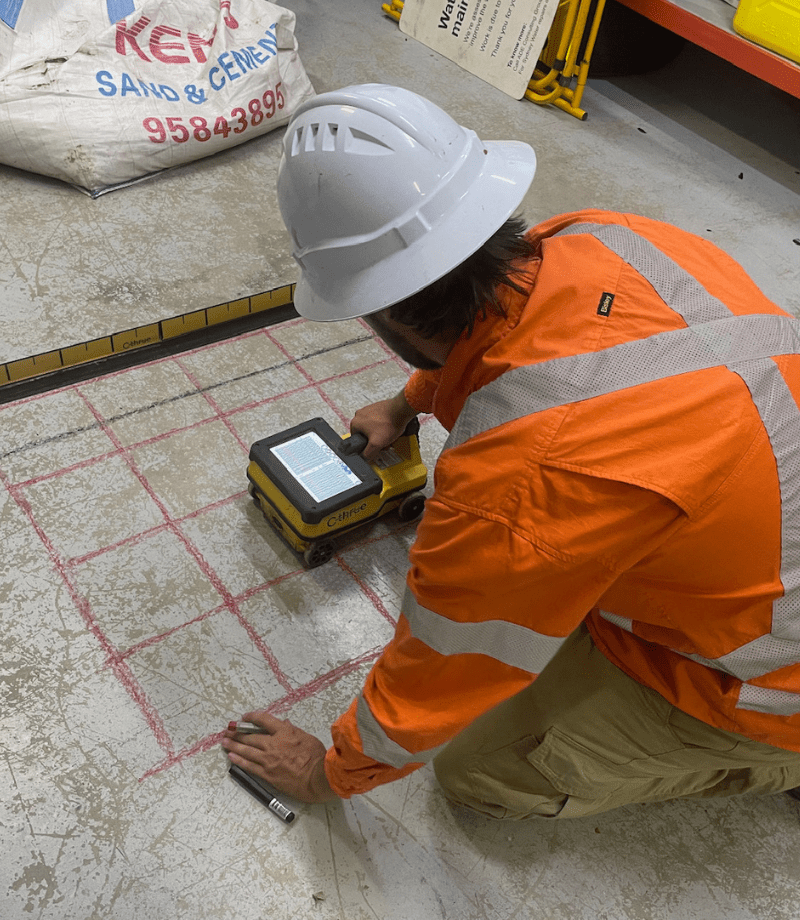Harness the Strategic Side of Concrete Scanning for Unparalleled Job Success and Quality Guarantee
In the realm of modern construction and infrastructure development, the usage of concrete scanning technology has actually emerged as a pivotal device for ensuring project success and keeping quality requirements. The true power of concrete scanning exists not only in its capability to enhance project results yet likewise in its capacity to revolutionize standard practices, establishing a new benchmark for accuracy and performance in the building market.
The Relevance of Concrete Scanning
Concrete scanning is a crucial action in building and construction projects to make certain the safety and integrity of structures. By using various scanning innovations such as Ground Permeating Radar (GPR) and electro-magnetic induction, building and construction teams can non-destructively review the subsurface of concrete structures to identify prospective risks like rebar, channels, or post-tension cords. This details is critical for job supervisors, service providers, and engineers to make enlightened choices and avoid costly blunders throughout the construction process.
One of the main reasons that concrete scanning is so crucial is its capability to stop accidents and injuries on the building site. Unintentionally reducing via a real-time electrical conduit or destructive post-tension cable televisions can have disastrous repercussions, not just in terms of safety and security but additionally in regards to job delays and financial ramifications. By carrying out detailed concrete scanning before any type of boring, reducing, or coring tasks, building teams can reduce threats and develop a safer working atmosphere for everyone involved.
Along with safety considerations, concrete scanning also plays a key duty in making sure the long-lasting durability and quality of the structure. By detecting any type of defects or abnormalities concealed below the surface, such as gaps or delamination, very early intervention can be executed to address these issues prior to they rise right into more considerable problems. Ultimately, investing in concrete scanning is an aggressive measure that can save time, money, and resources in the future, while likewise maintaining the highest requirements of construction quality.
Advanced Modern Technology for Precise Outcomes

In addition, 3D scanning technologies supply an extensive sight of the subsurface environment by producing detailed digital models. These designs offer valuable insights right into the structural stability of concrete elements and help in determining possible weaknesses prior to they intensify into major problems. By including these innovative modern technologies into concrete scanning practices, building teams can streamline workflows, minimize project hold-ups, and guarantee the overall quality and success of the project. The precision and performance offered by these tools contribute significantly to the task's success by assisting in educated decision-making and improving top quality guarantee measures.
Enhancing Project Performance and Timelines

Moreover, concrete scanning enables groups to determine prospective threats and structural weaknesses at an early stage, permitting punctual removal and stopping accidents that might thwart job timelines. The real-time information given by scanning devices assists in notified decision-making, causing smoother sychronisation among different trades and stakeholders. This enhanced collaboration decreases problems, enhances performance, and eventually speeds up project distribution.
Moreover, by proactively attending to problems via concrete scanning, construction groups can stick to timetables better, lower downtime, and maximize source allocation. The ability to spot surprise challenges and confirm architectural stability successfully adds to total project performance and timelines, ensuring successful end results and customer complete satisfaction.
Ensuring Safety and Danger Reduction

Risk reduction techniques can be improved via the comprehensive info offered by concrete scanning, enabling job teams to make enlightened decisions that lower the probability of unforeseen occurrences. In addition, by accurately mapping out subsurface problems, specialists can prevent costly rework, hold-ups, and damage to existing frameworks, better adding to total job safety and security and success. Implementing concrete scanning as a regular method not just like it ensures a safer work atmosphere but likewise infuses self-confidence in stakeholders regarding the project's commitment to high quality and danger management.
Quality Control Via Concrete Scanning
Concrete scanning plays a pivotal function in promoting quality control criteria within construction jobs. By making use of sophisticated look here scanning modern technologies such as Ground Penetrating Radar (GPR) and Concrete X-ray, job managers and designers can ensure the stability and high quality of concrete frameworks. With concrete scanning, possible defects, such as spaces, fractures, or enhancing bar blockage, can be discovered non-destructively, enabling for prompt treatments to keep the architectural stability of the task.
Quality guarantee through concrete scanning not only helps in determining existing concerns however also makes it possible for positive actions to avoid future problems that might endanger the safety and security and longevity of the structure. By conducting complete scans at vital stages of construction, teams can verify the precision of architectural plans, confirm the placement of crucial aspects, and attend to any type of deviations immediately. This positive technique decreases rework, minimizes expensive hold-ups, and inevitably leads to the shipment of top quality, long lasting frameworks that meet or surpass sector criteria.
Final Thought
In verdict, concrete scanning plays an important duty in making certain job success, effectiveness, quality, and security assurance. The critical edge given by concrete scanning permits for aggressive danger mitigation and boosts overall task monitoring.
In the realm of contemporary building and construction and facilities growth, the application of concrete scanning technology has emerged as a crucial tool for ensuring task success and keeping top quality requirements. By integrating these sophisticated technologies into concrete scanning methods, construction groups can improve process, reduce task hold-ups, and ensure the total quality and success of the task.Offered the important nature of job effectiveness and timelines in building and construction management, the focus currently changes in the direction of guaranteeing safety and security and mitigating dangers within the project atmosphere.Concrete scanning plays an essential duty in upholding high quality guarantee standards within building projects. By making use of innovative scanning modern technologies such read review as Ground Penetrating Radar (GPR) and Concrete X-ray, project managers and engineers can ensure the honesty and quality of concrete structures.